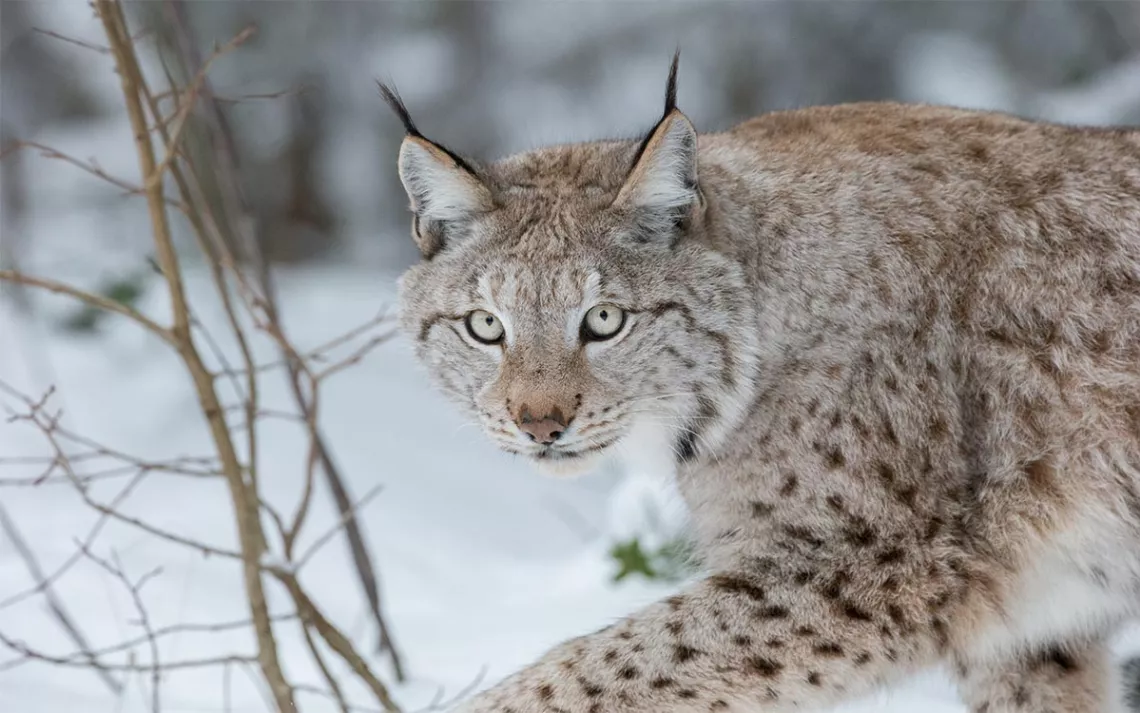The Growing Trade in Bear, Lynx, and Wolf Pelts
You won’t believe this is still legal

Photo by Andy_Astbury/iStock
Fur trapping in the United States did not go out with Jim Bridger and beaver-fur hats. Thousands of wild mammals are still being trapped every year for their fur—and the number is increasing. In 2011, for example, 16,258 wild bobcats were killed and their skins exported. By 2015, that number had soared to 65,603.
“The idea that you can remove tens of thousands of individuals of a species, and that would have absolutely no impact, makes no sense,” says Bethany Cotton, wildlife program director for WildEarth Guardians. In the case of bobcats, the IUCN Red List of Threatened Species notes that “challenges for long-term persistence [of bobcats] in some regions include market hunting for the fur trade.”
The market is also growing for U.S. river otter, gray wolf, and brown bear skins, with prices per pelt rising beyond $300 as demand increases in China, Europe, and Russia. Over the last five years, the Center for Biological Diversity has found that an average of 80,000 pelts of these animals have been legally exported under the U.S. Fish and Wildlife Service’s wildlife export program.
That program began in 1977 but operated for decades without an environmental assessment. In 2016, WildEarth filed suit, followed by CBD. The U.S. Fish and Wildlife Service finally issued a draft assessment last spring that analyzed the fur trade’s impact on bobcats, river otters, gray wolves, lynx, and brown bears in relationship to the export program. But, says Sarah Uhlemann, CBD’s international program director and senior attorney, “With killing on such a massive scale, it’s time for U.S. regulators to take a hard look at the environmental consequences.” If they did, she says, “we hope that it’ll reduce the number of animals trapped and killed.”
The reason tracking of this information is so important is because the five species are all protected under Appendix II of CITES, an international treaty created to ensure that trade in wildlife does not threaten a species' survival. Trade of these species is allowed insofar as it “will not be detrimental to the survival of the species in the wild.”
“If you don’t know what percentage of the population is being removed or killed on an annual basis, or [whether] there are signs that the population is taking a nose dive, then you can’t decide that the export of pelts is having a significant impact on the environment or these individual species,” says Cotton.
Another problem is that traps are indiscriminate. In 2000, trappers in Montana self-reported 16 lynx caught in snares set for other species. (As WildEarth notes, lynx are extremely vulnerable to the body grip and foothold traps used to catch bobcats.) Often other “non-target” species are victims. Data from Idaho-licensed trappers indicate that from 2010 to 2016, 227 non-targeted mountain lions, 207 fishers, five eagles, and four wolverines were also caught, in addition to 158 domestic dogs.
Wolves are also of concern under the export program. Only Alaska and Montana are allowed to export the pelts of gray wolves, which have just begun to recover and stabilize after near eradication from the western United States. Allowing the export of wolf pelts helps create a demand for gray wolf fur on the international market and could adversely affect the future growth and recovery of wolf populations.
“We know a lot more about the biology of these animals and their importance to these ecosystems than we did 20 years ago,” says Cotton. “It’s important to update these decisions and analysis accordingly. We want this decision to be made on sound and transparent science.”
 The Magazine of The Sierra Club
The Magazine of The Sierra Club






